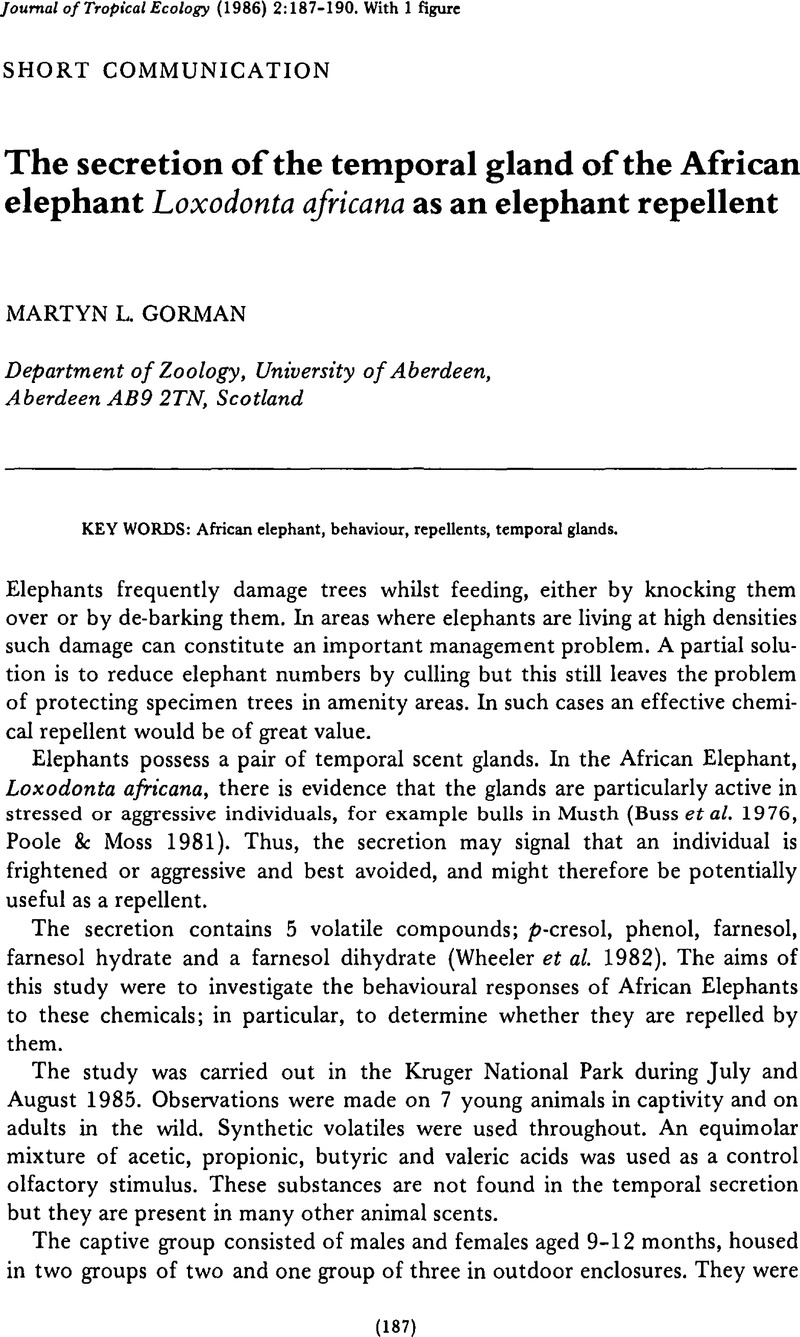Crossref Citations
This article has been cited by the following publications. This list is generated based on data provided by Crossref.
Rasmussen, L. E. Little
1988.
Chemosensory responses in two species of elephants to constituents of temporal gland secretion and musth urine.
Journal of Chemical Ecology,
Vol. 14,
Issue. 8,
p.
1687.
Goodwin, Thomas E.
Rasmussen, Elizabeth L.
Guinn, Ashley C.
McKelvey, Samantha S.
Gunawardena, Rohith
Riddle, Scott W.
and
Riddle, Heidi S.
1999.
African Elephant Sesquiterpenes.
Journal of Natural Products,
Vol. 62,
Issue. 11,
p.
1570.
Rasmussen, L.E.L.
and
Krishnamurthy, V.
2000.
How chemical signals integrate Asian elephant society: The known and the unknown.
Zoo Biology,
Vol. 19,
Issue. 5,
p.
405.
Rasmussen, L.E.L.
2006.
Biology, Medicine, and Surgery of Elephants.
p.
409.
Pérez‐Manrique, Ana
and
Gomila, Antoni
2018.
The comparative study of empathy: sympathetic concern and empathic perspective‐taking in non‐human animals.
Biological Reviews,
Vol. 93,
Issue. 1,
p.
248.
Littlewood, Nick A.
Rocha, Ricardo
Smith, Rebecca K.
Martin, Philip A.
Lockhart, Sarah L.
and
Schoonover, Rebecca F.
2020.
Terrestrial Mammal Conservation.
2021.
Elephants Under Human Care.
p.
341.
Pérez‐Manrique, Ana
and
Gomila, Antoni
2022.
Emotional contagion in nonhuman animals: A review.
WIREs Cognitive Science,
Vol. 13,
Issue. 1,



